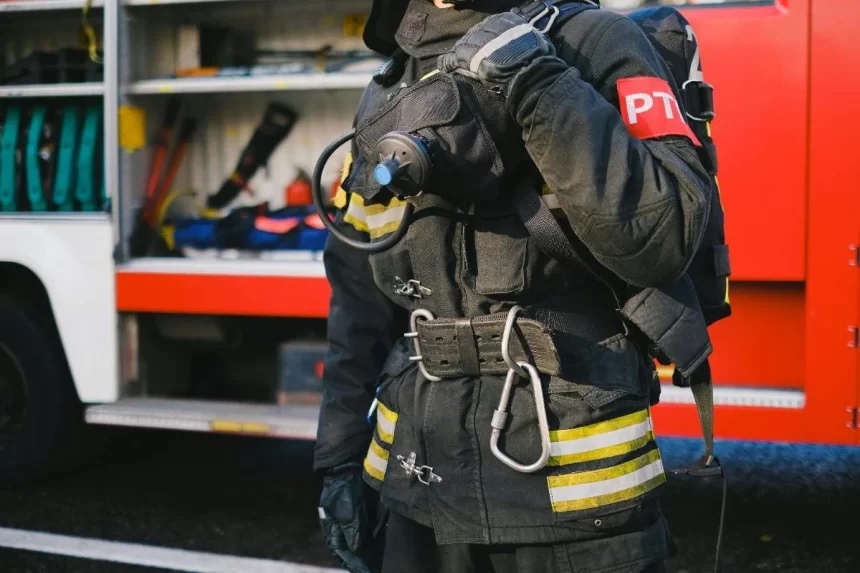For centuries, firefighters have bravely battled blazes with courage and traditional tools. However, the fire service industry is transforming. Technological advancements are revolutionizing firefighting, equipping heroes with cutting-edge tools. These tools will enhance their safety, improve situational awareness, and empower them to tackle even the most challenging fires more effectively.
In this article, we will explore how these tech innovations are changing the face of firefighting, making it a safer and more efficient profession.
Key Areas of Tech Innovation
Tech innovation in firefighting is a multi-pronged outbreak. It’s improving firefighter safety with smarter personal protective equipment (PPE) and real-time health monitoring. Additionally, virtual reality training and improved communication systems enhance preparation and on-scene coordination.
According to Statista, there were approximately 331,407 state and local firefighters in the US in 2020. This number was reduced slightly from the previous year when 333,268 firefighters were employed. The possible reason for the decline is the hazards of firefighting.
However, now, with new tools and technology, like drones and robots venturing into dangerous areas to locate victims and combat flames, it is becoming safer. Overall, these advancements are making firefighting more effective and saving lives.
Fire Detection and Prevention
Fire detection is also experiencing a tech revolution. Traditional smoke and heat detectors are still crucial, but they’re being linked with next-generation systems. Multi-criteria detectors combine smoke, heat, and carbon monoxide sensors for a more comprehensive picture. Advanced sensors can even analyze the specific signatures of smoke and flames, reducing false alarms.
Additionally, video smoke detection utilizes cameras with intelligent algorithms to identify the visual cues of smoke, leading to faster and more accurate fire identification. These advancements are giving firefighters a vital head start in containing blazes.
Enhanced Situational Awareness
According to NFPA Research, there were about 29,452 fire departments in the US in 2020. Sadly, 37% of the fire departments had no emergency services, while only 46% of departments provided basic life support (BLS) to the firefighters. Only 17% of the departments provide advanced life support to the firefighters. The aim is to increase ALS or advanced life support for firefighters with the latest technology. Keeping firefighters informed is key to their safety and success.
Tech is creating a new era of situational awareness. Wearable sensor technology can track firefighters’ location, vital signs, and air quality, providing real-time data to incident commanders. Thermal imaging cameras and helmet-mounted displays offer a clearer picture of the fire environment, helping firefighters identify hidden hazards and locate victims. This improved awareness allows for better decision-making, quicker rescues, and safer operations overall.
Robotic Firefighting Equipment
One of the most exciting innovations is robotic firefighting equipment. These remote-controlled machines take on the most dangerous tasks, venturing into infernos and confined spaces where firefighters wouldn’t dare tread. This not only protects firefighters from physical dangers but also shields them from exposure to the harmful Aqueous Film-Forming Foam (AFFF).
According to TorHoerman Law, AFFF has been linked to various diseases, including cancer, due to its PFAS content. AFFF, traditionally used to combat liquid fires, has recently been minimized due to lawsuits alleging long-term health risks for firefighters.
The firefighter foam lawsuit against AFFF manufacturers claims that they were aware of the health risks of AFFF but failed to warn the public. Robotic firefighters offer a safer alternative, allowing human firefighters to focus on strategy and overall scene control while the robots handle direct fire suppression.
Improved Firefighter Safety
Firefighter safety is the driving force behind many tech advancements. Smart PPE with integrated sensors can monitor vital signs and alert commanders to potential heat stress or overexertion. Improved materials offer better heat and flame resistance, while lighter designs reduce fatigue.
Combined with real-time building data and fire simulations, firefighters can make informed decisions about entry points and attack strategies, minimizing risk and maximizing safety.
The Impact of Tech Innovation
The impact of tech innovation on firefighting is undeniable. It’s a revolution that’s saving lives, property, and firefighter well-being. From the warning provided by advanced detection systems to the crucial intel gleaned from firefighting robots, technology empowers firefighters to tackle blazes more effectively.
Improved communication and situational awareness keep them informed and safe, while smarter PPE and training methods minimize risks. Ultimately, these advancements are leading to a new era of firefighting. One where technology stands shoulder-to-shoulder with courage, giving firefighters the upper hand in the fight against flames.
Challenges and Considerations
As per the US Fire Administration, the fire department renders its invaluable services to people, groups, and communities all over the country. The fire departments responded to 26,959,000 incidents of runs and calls in 2020.
About two-thirds of these reported calls needed rescue and emergency medical services from the fire department. The fire department responded to these emergency requirements very well. Despite the tech innovations in firefighting, there are a lot of challenges and considerations in firefighting.
Cost can be a significant hurdle, with cutting-edge equipment requiring substantial investment. Integration and training are also crucial considerations. Different technologies need to seamlessly work together, and firefighters must be trained to effectively utilize them. Finally, ethical considerations regarding potential job displacement due to automation and the reliance on technology in high-pressure situations need to be addressed.
Overcoming these challenges will ensure technological advancements continue to empower firefighters, not replace them.
Frequently Asked Questions
Why is AFFF considered dangerous?
AFFF contains per- and polyfluoroalkyl substances (PFAS), also known as “forever chemicals” because they don’t break down easily. PFAS have been linked to serious health problems including cancer, thyroid disease, immune system issues, and reproductive harm. If you are a victim, immediately reach out to an AFFF lawsuit attorney. They help you understand your options.
Are there any safety concerns associated with using robots in firefighting?
Yes, firefighter robots do raise safety concerns. Reliability in unpredictable fire environments and the potential for malfunction are issues. Additionally, overreliance on robots could lead to complacency or delayed human response.
Can these technologies be used to fight all types of fires?
Not all fire types are a perfect match for current tech. While many technologies can adapt to various fires, some, like those using water, might not be suitable for electrical fires or hazardous material fires.
Will firefighter technology replace human firefighters?
Unlikely to happen soon. Firefighting demands a unique mix of bravery, on-the-fly thinking, and the ability to adapt to ever-changing situations – qualities technology can’t fully replicate. Instead, firefighter tech is expected to be a game-changer, empowering firefighters and keeping them safe.
In conclusion, technological innovation is rapidly transforming the fire service industry. From smarter detection systems and life-saving robots to improved communication and safety, tech is giving firefighters the upper hand in the battle against blazes.
While challenges like cost, integration, and ethical considerations exist, continued investment and development hold the promise of an even brighter future. With firefighters empowered by ever-more-sophisticated technology, communities can look forward to a future of enhanced fire protection and a job well done.










